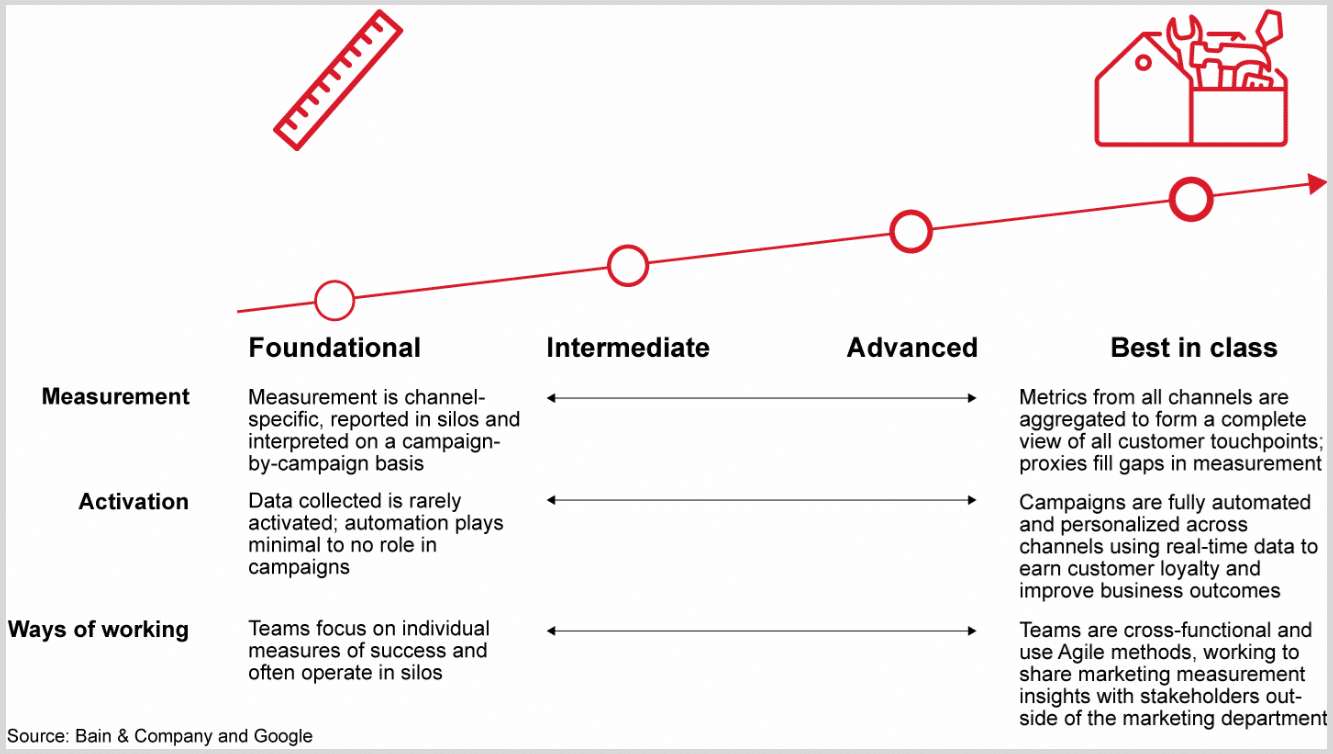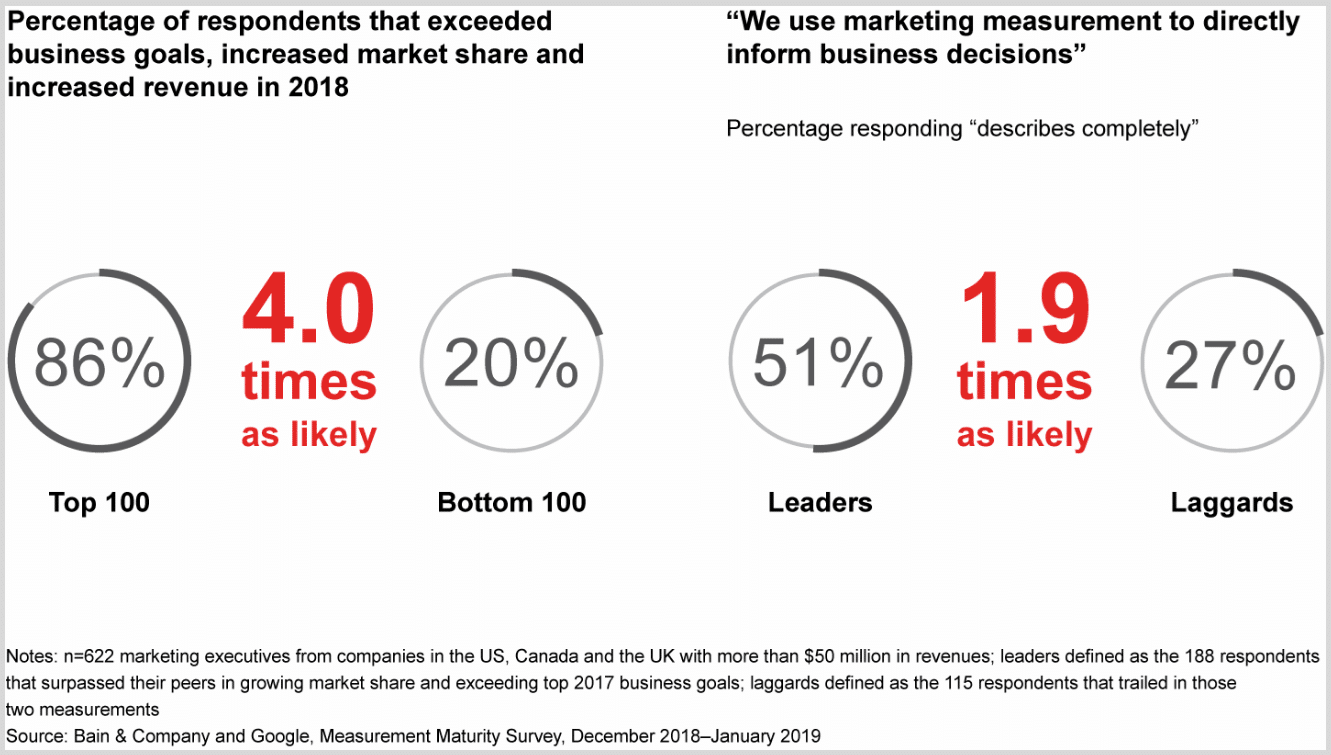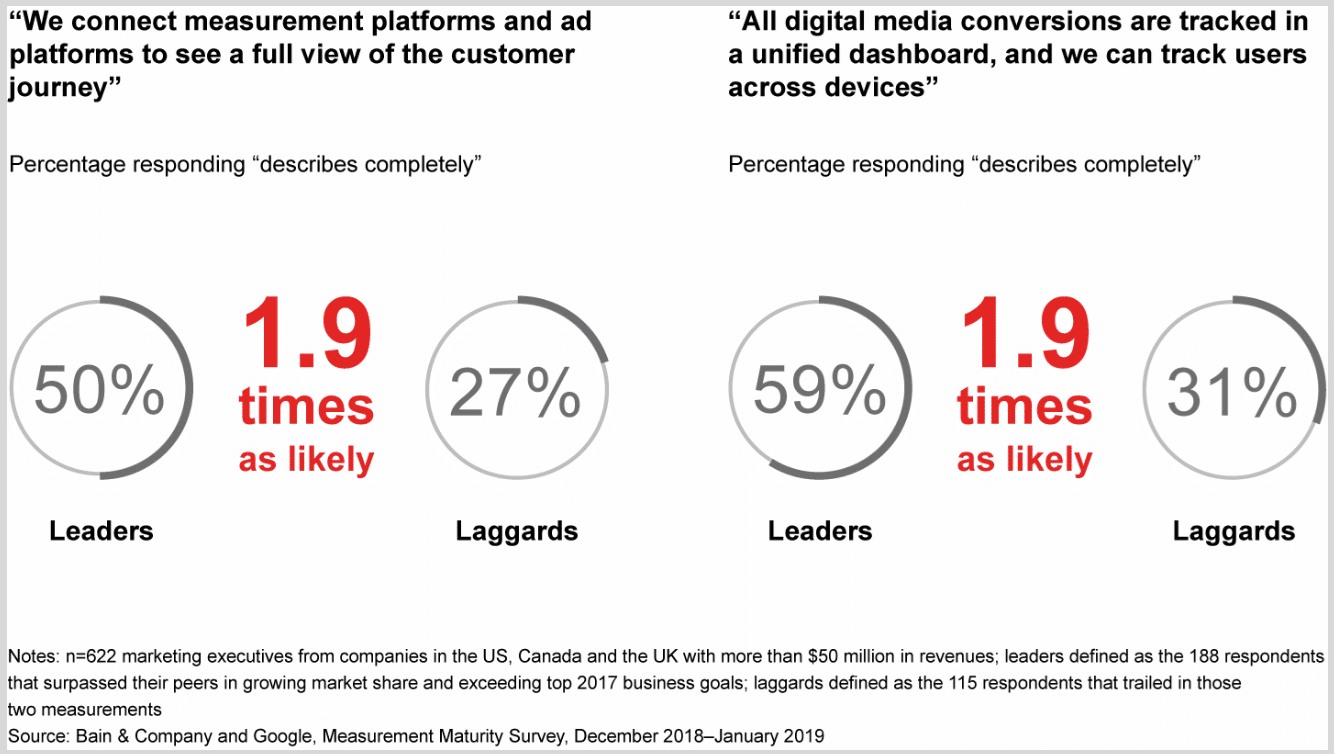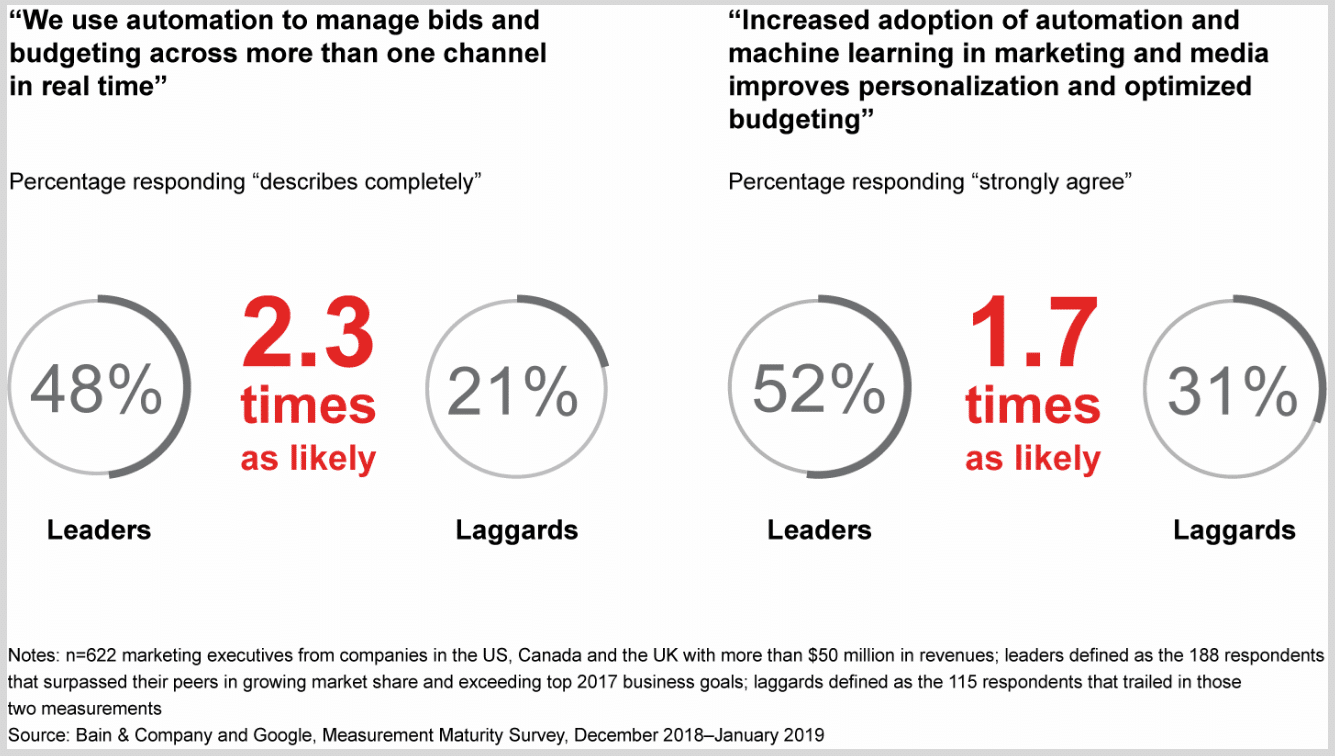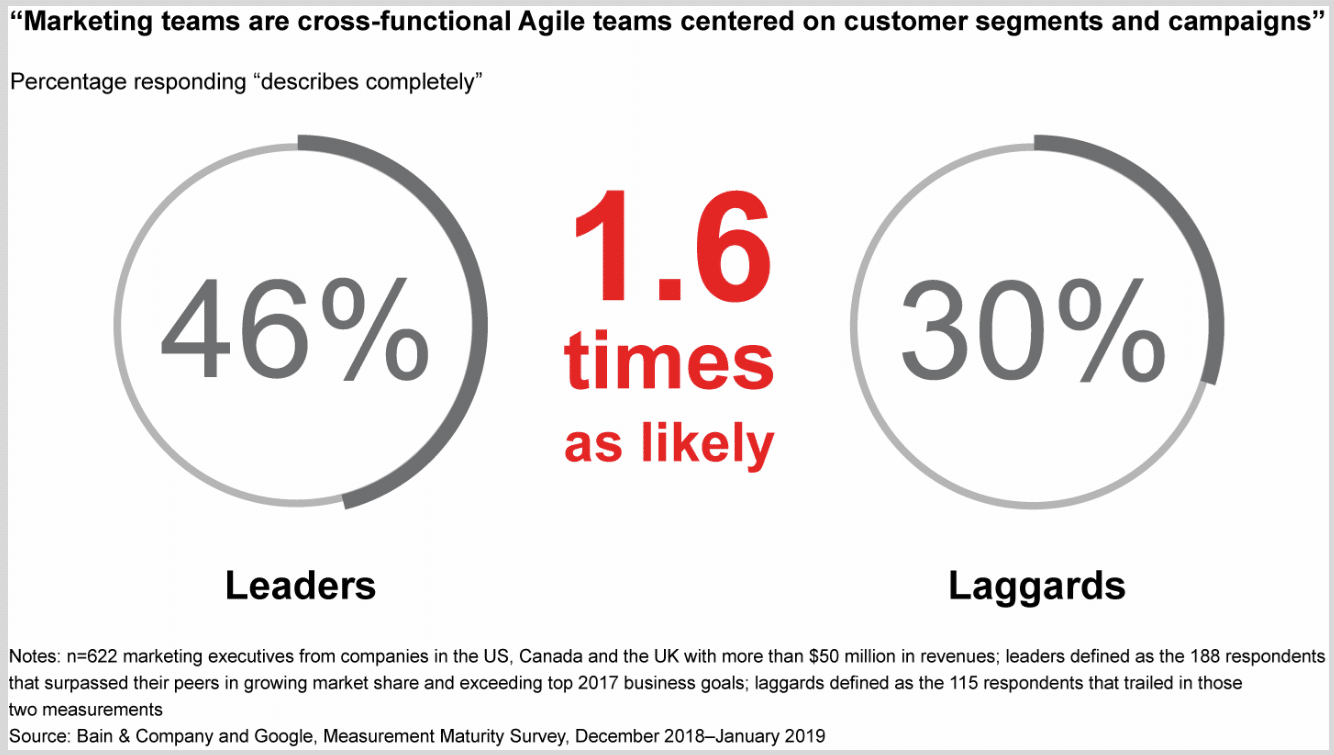Plenty of companies measure marketing and comms activities—but all too often, their measurement does not lead to useful actions, get shared broadly among teams, or inform strategic business decisions. The savviest organizations have raised their game in the discipline of measurement to build a complete picture of the customer and tailor messages and campaigns that are welcomed, not intrusive—and these marketing “leaders” are laying the groundwork for modern-day success.
Management consulting firm Bain & Company, in collaboration with Google, recently surveyed more than 600 marketing executives in the US, UK, and Canada for a new report, The Measurement Advantage, and found that the 100 companies at the highest level of measurement maturity have outgrown competitors and are four times as likely as the 100 least mature companies to exceed their business goals, grow revenue, and gain market share.
“Exciting new measurement technologies hold the promise of lifting marketing effectiveness to new heights but, in the real world, no marketer can thrive on technology alone. Marketers constantly battle rising expectations from the C-suite, new regulations around privacy, and fast-changing rules of engagement,” said John Grudnowski, digital marketing expert at Bain & Company, in a news release. “The savviest marketers realize that making progress on the measurement journey involves mobilizing both their teams and their technologies, which leads to better business outcomes, whether that’s revenue, profitability or customer churn.”
Companies sort into four levels along a marketing measurement maturity curve:
According to the research, measurement capabilities are the fastest-growing priority for respondents’ goals and budgets among companies at all levels of maturity. However, measurement leaders are creating new digital divides between themselves and their competition.
Companies at the highest level of measurement maturity outperform others in attaining their business goals:
Organizations that have attained a measurement advantage devote substantial time and effort to excelling in three areas:
1. Tying measurement output to the bottom line
Between disparate internal data sources, agency partners, and external ad platforms, marketers have a sea of data to work with. The challenge is how to connect different data analyses so that they generate insights that advance business goals. Measurement works best when it paints a complete picture of the entire customer journey rather than a collection of single touchpoints. For instance, the leaders among our respondents are nearly two times as likely as laggards to connect measurement platforms and ad platforms together to get a full view of the customer journey.
Leaders also take care to link marketing activities to business outcomes. “Measurement is the biggest strategic challenge for marketers. At Google, we have seen some of our partners flourish because of their commitment to measurement,” said Karen Sauder, vice president of sales at Google, in the release. “They treat measurement as a key driver for business outcomes; remember measurement and reporting are not the same thing. They have a culture built around it, and they also make smarter decisions faster by embracing automation.”
Leading organizations are almost twice as likely to see the full customer journey, on any device:
2. Activating output into business strategies
After enough experience unlocking insights through measurement, companies can move to the next level and convert their deep customer understanding and segmentation into strategies for new customer acquisition, expanded share of wallet, and sales growth. This is where automation and machine learning are starting to prove their worth.
Still, many companies struggle to get automation right. Some leave money on the table because they automate only one channel, or they do not invest enough to attract the best customers, or they simply set rules based on short-term return on advertising spending (ROAS) gains rather than the longer-term business. Bain estimates, based on more than 2,250 completed tests, that marketers on average could realize 25 percent to 30 percent higher revenue over the first year for each dollar spent on advanced measurement capabilities that inform bidding and automation strategies. In fact, the marketing leaders in the analysis are 2.3 times as likely as laggards to use automation to manage bids and budgeting across more than one channel in real time.
Leading organizations broadly embrace automation:
3. Updating ways of working
Marketing leaders find that shifting from channel-centered to customer-centered teams serves to advance broader business goals. Once they organize around customer priorities, teams that have the autonomy to test and learn, unconstrained by channel- or budget-based silos or operational metrics, will be able to deliver superior customer experiences.
Those that use Agile techniques to structure their work often can respond more quickly to new information and regulation in today’s privacy-first environment, and avoid having to execute outdated marketing plans. Bain’s survey, for instance, finds that marketing leaders are 1.6 times as likely as laggards to organize Agile teams centered on customer segments or campaigns. And they are 1.6 times as likely to integrate and share measurement metrics with other teams.
Measurement thus plays a key role in creating a customer-centered culture that embraces the test-and-learn approach. By assembling, consolidating, and harnessing often basic, readily available data, marketing teams can deliver personalized, in-the-moment messages. That transforms the experience from one of feeling bombarded to one of feeling valued and informed.
Leading companies tend to organize Agile teams centered on customer segments and campaigns:
“Expectations of CMOs are rising. They’re held accountable for demonstrating a return on marketing investment that directly affects business outcomes,” said Wendy Grad, expert vice president of Bain & Company’s Advanced Digital and Product Team (ADAPT), in the release. “Leading CMOs make measurement the centerpiece of their growth strategy, ultimately changing the way they understand and connect with customers.”


